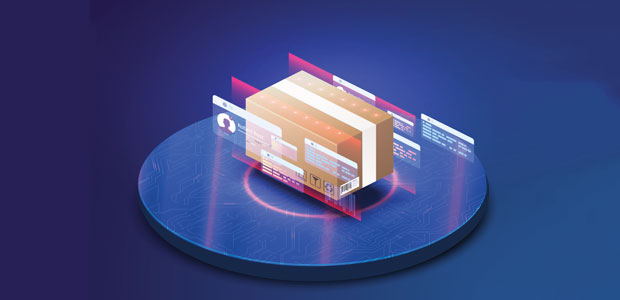
Logistics tech: What is holding businesses back?
Increasingly, the logistics industry is a technological one. The fortunes of the online retail sector is particularly interwoven with the growth of logistics – with both enjoying substantial growth during the pandemic.
In large part thanks to the public’s greater dependence on ordering goods online during lockdowns, and the need for businesses to experiment fast to adapt their offering to digital platforms, today online retail now stands able to compete with the high street in every viable sector.
Online retail has been on the rise consistently since its introduction to wide markets, though has accelerated significantly in recent years. Before the pandemic, its share of total sales stood at 22.7%, and now stands at 27.8% - a significant step up on its long-term growth curve. While this has subsided since lockdowns and retail peak season conspired to fuel a 37.7% share in 2020, it highlights that enhanced exposure has won over many consumers to the benefits of shopping online.
In turn, the logistics industry has benefitted – now accounting for one tenth of all non-financial revenue in the UK.
Given this parallel growth, it would be reasonable to expect the logistics industry to be in the drivers’ seat when it comes to evolving for the future – yet there is a strange stagnation in the markets when it comes to adopting innovation.
Businesses slow to embrace new tech
The wider economic circumstances in the UK mean many businesses are facing spiralling costs: rising interest and inflation, shortage of and competition for warehouse space, increasingly competitive markets, and uncertainty around importing materials all factor into rising operational costs.
It is strange, then, that businesses seem to be leaving money on the table by dragging their feet on embracing new value-adding or cost-saving technologies – and it is incumbent on the logistics industry to tackle this issue to continue its impressive growth.
Of course, many businesses will feel satisfied with their existing logistical processes. If they can cope with fulfilling their orders, even through peak seasons, and their customer return rate appears to be holding up, what need is there to invest in upgrades?
Communication improvements
The issue may rest in lacking communication. Research has found that more than two thirds of small to medium businesses (SMEs) use cloud-based software to manage and oversee their orders and couriers. In the early days of cloud, extolling the virtues of a technology few understood was a challenge. Its high saturation into SMEs today demonstrates that taking the time to explain how new products work and what they offer is possible, though clients may still need time to adjust.
While cloud tech is now a necessity for many businesses, other technologies – even ones which are easy to explain – still lag behind. Only three in ten small businesses use CRM tools to manage their customer base, meaning a majority are either overlooking the importance of attention to detail in customer service, or are applying outdated and laborious methods to achieve the same results.
Only one fifth (21%) have invested in software to integrate their sales and supply chain processes together. Particularly when considering businesses which depend on online sales, this is a striking figure. Linking together all aspects of the sales process is both a time and cost-saving addition to businesses, yet many still progress these stages manually.
This could be attributed to cautious business management. Business leaders may well be able to identify and evaluate beneficial tech, but see no need to seek it out until it becomes industry standard. In turn, some individuals within businesses may champion the integration of innovative tech, but find there are other investment priorities – and with most tech products lacking the ‘star power’ of cloud these investments may register as something which can wait.
Rewarding upgrade
In eCommerce, customer service is crucial. In any market, there will always be a competitor prepared to match or lower your price level, or offer a better range of products, or invest more in marketing. The best way for SMEs to assure long-term stability is to retain customers – meaning positive experiences are critical.
In turn, customers have a certain set of expectations. Fast delivery within an agreed time frame, at a reasonably low cost, and with real-time information accessible to them at all stages of the shipping.
All of these factors are crucial, yet many businesses favour more basic logistics solutions which could hamstring their ability to retain customers. Conversely, there are products on the market which can offer greater information on customer experience, should businesses wish to understand their sales operations in granular detail. Couriers can be constantly assessed for reliability and quality of service, and alternative options can be generated instantly if customer expectations are not being met once goods are out of the hands of the selling business.
In today’s bustling online retail marketplace, a competitive edge must be constantly sharpened – those who are attentive to the finer details will find it easier to get ahead and stay there.
At the same time, the logistics industry must match its investment in constantly evolving tech solutions, with an equally robust commitment to communicating these innovations to businesses. While cloud is an interesting use case for slow saturation, the ‘fail fast’ mentality of the modern startup culture means there is no need to be patient – value-adding tech can succeed now, if business and the logistics industry co-operate to implement it efficiently and effectively.

